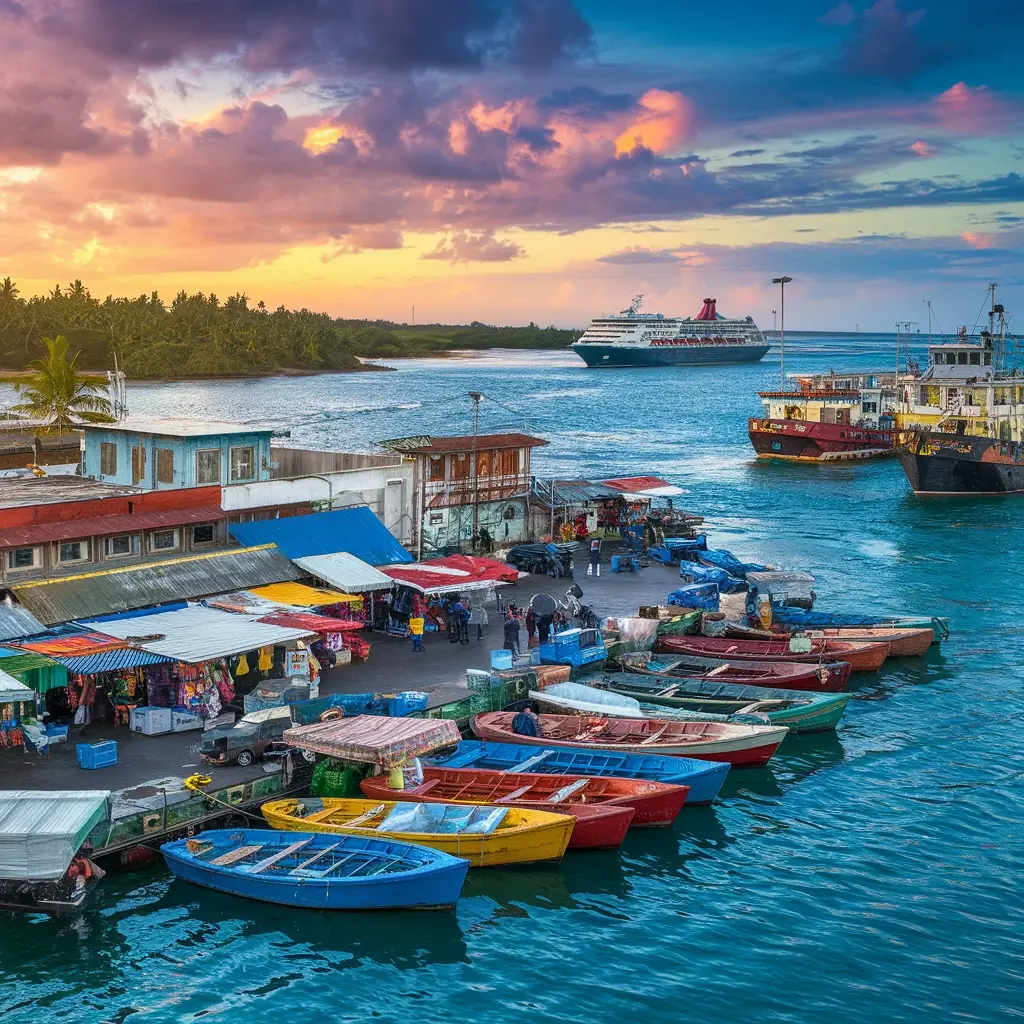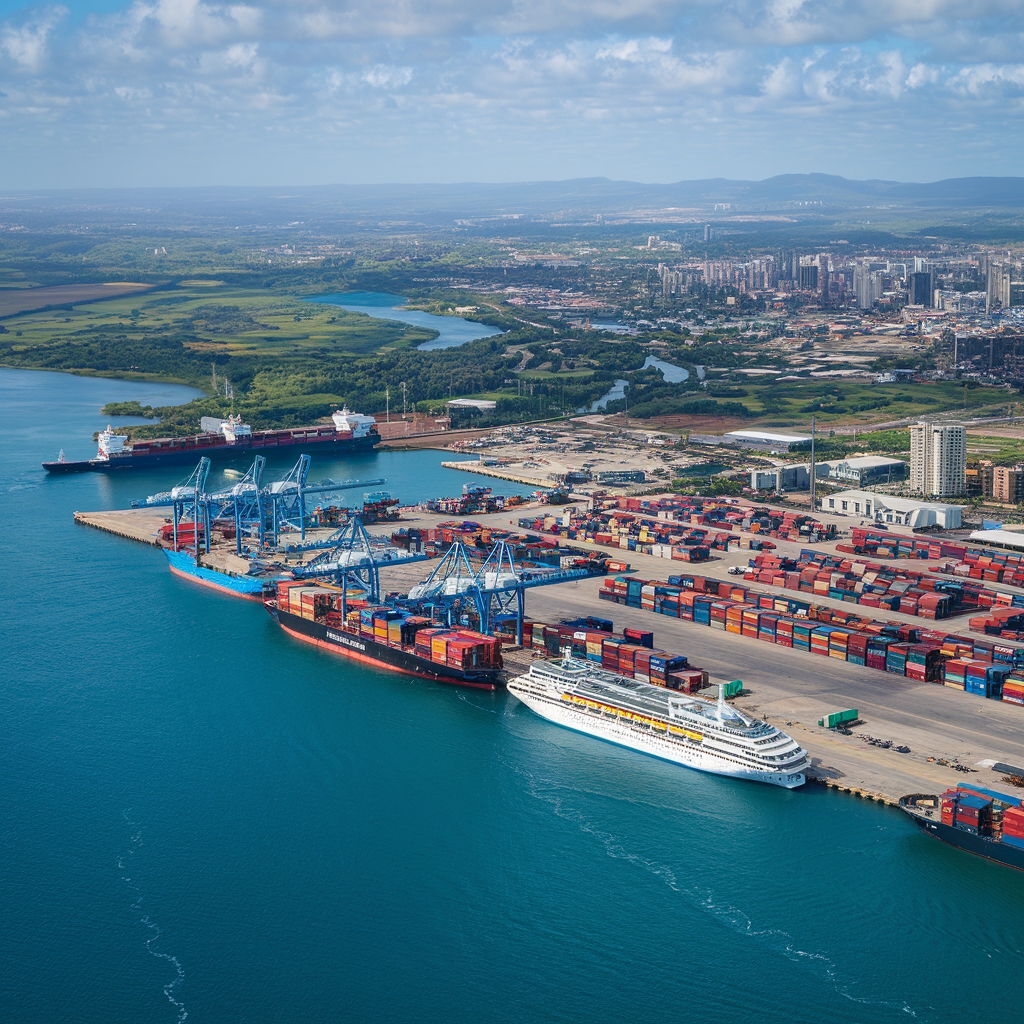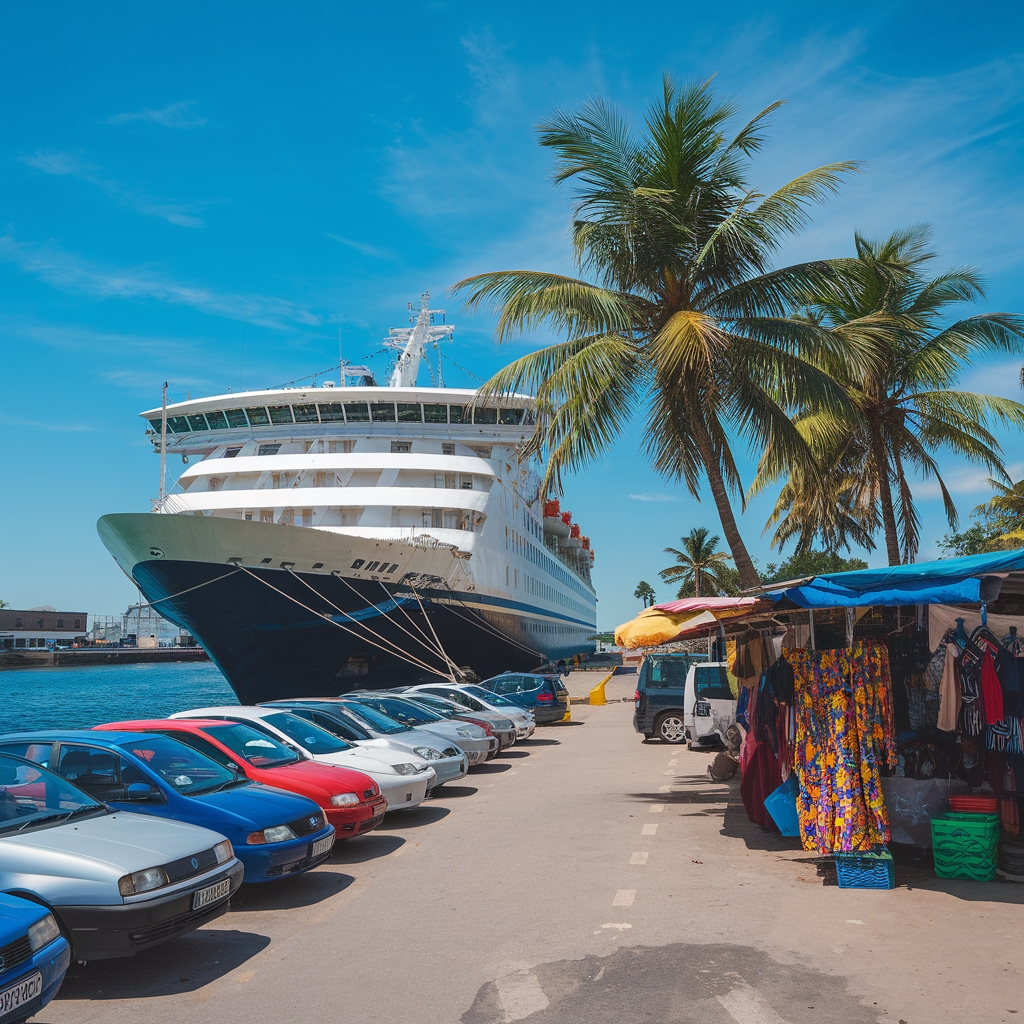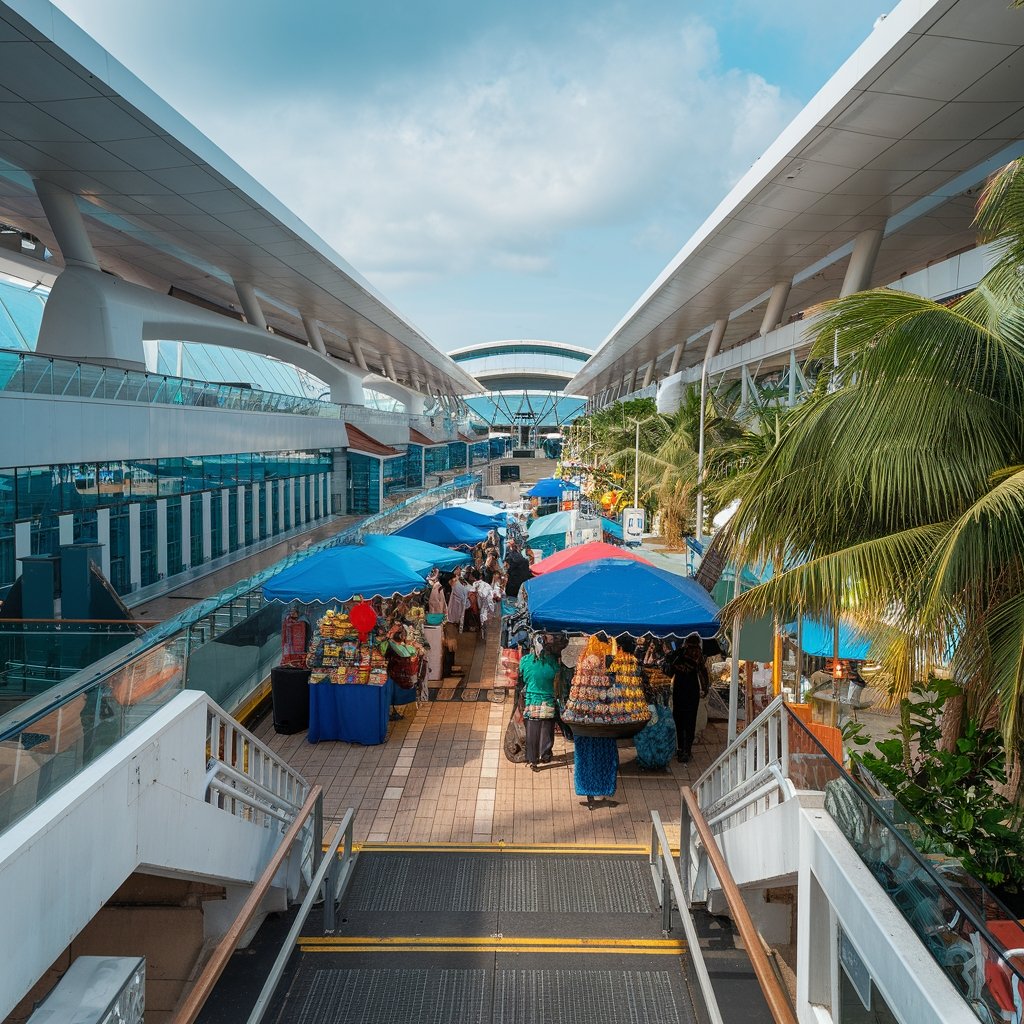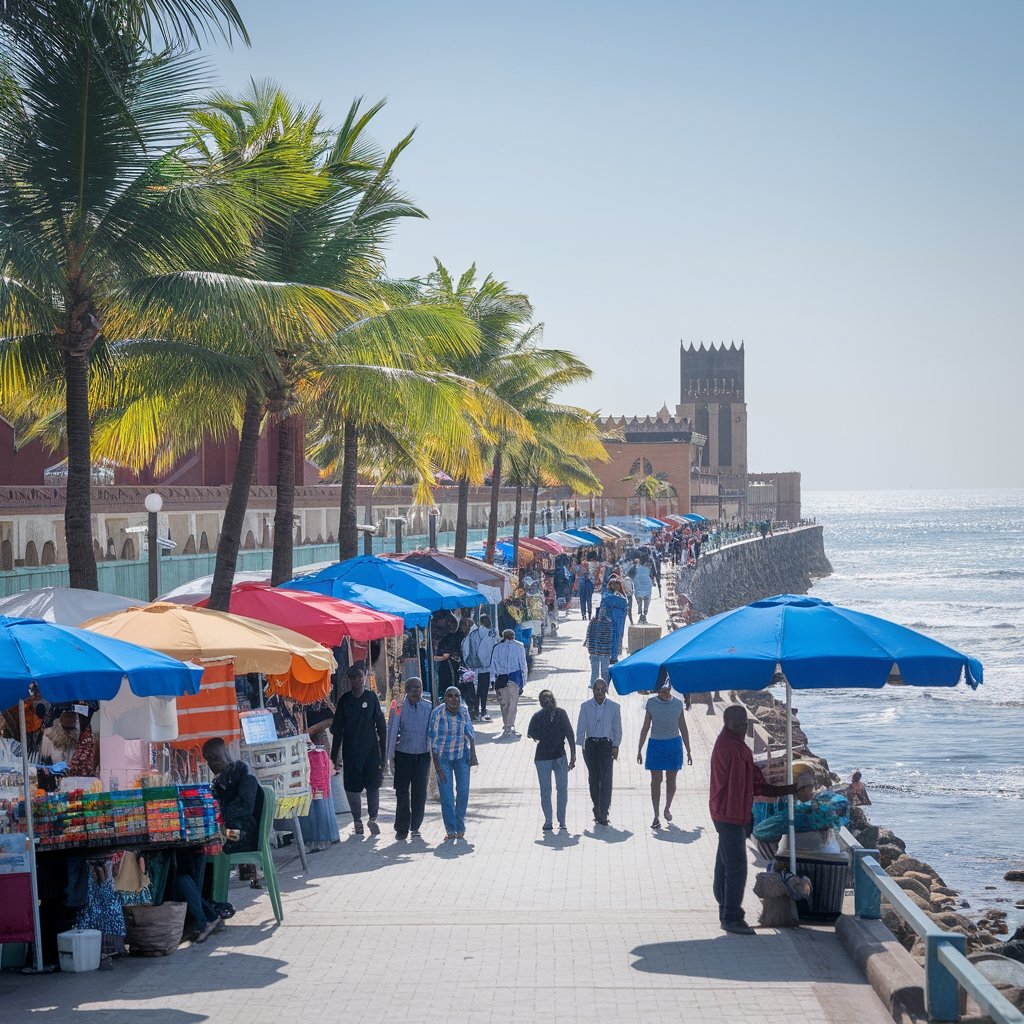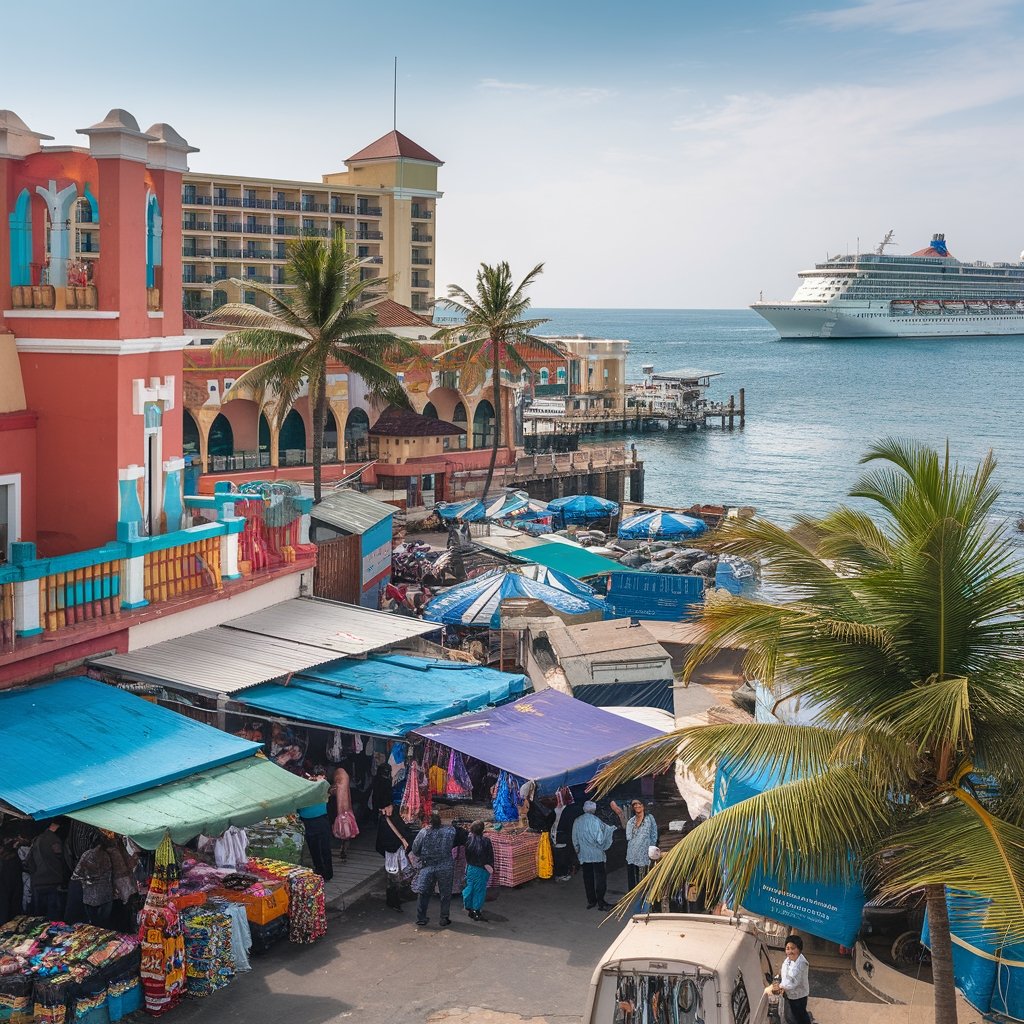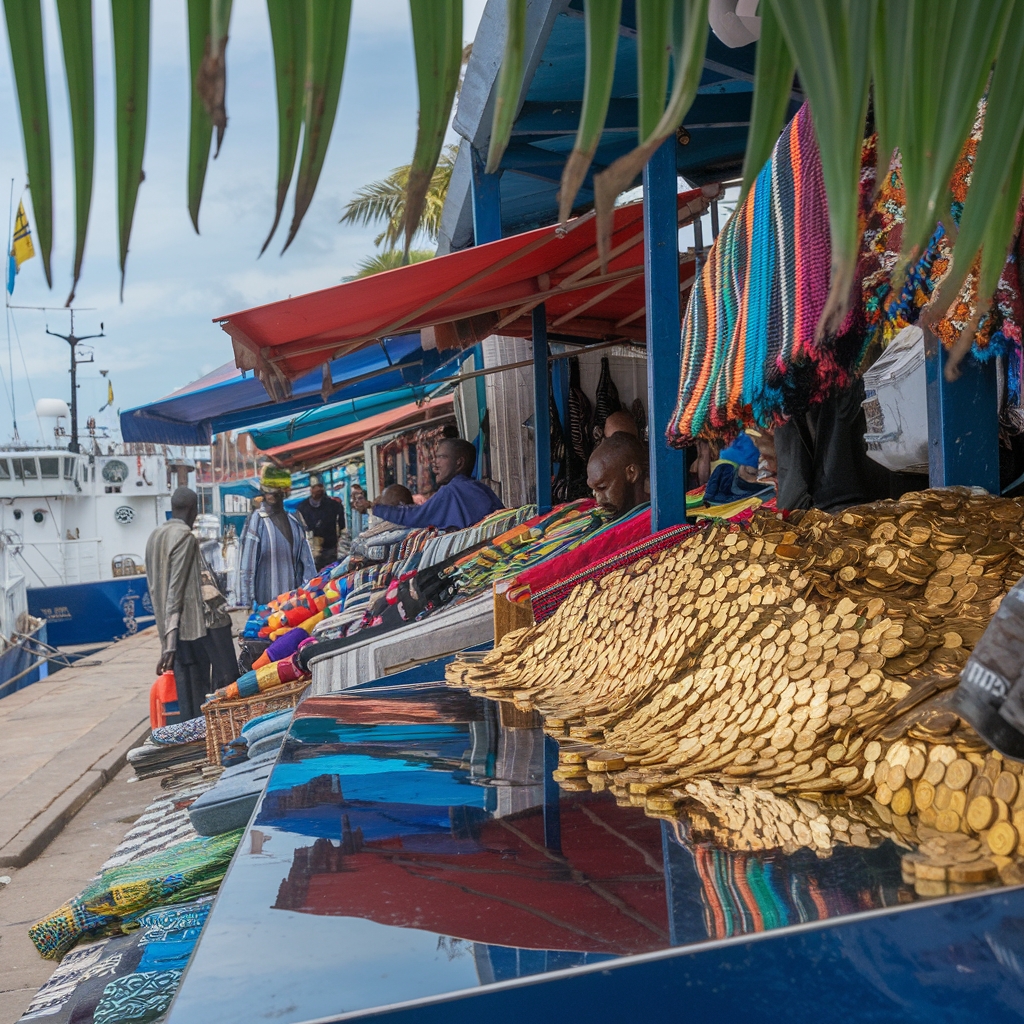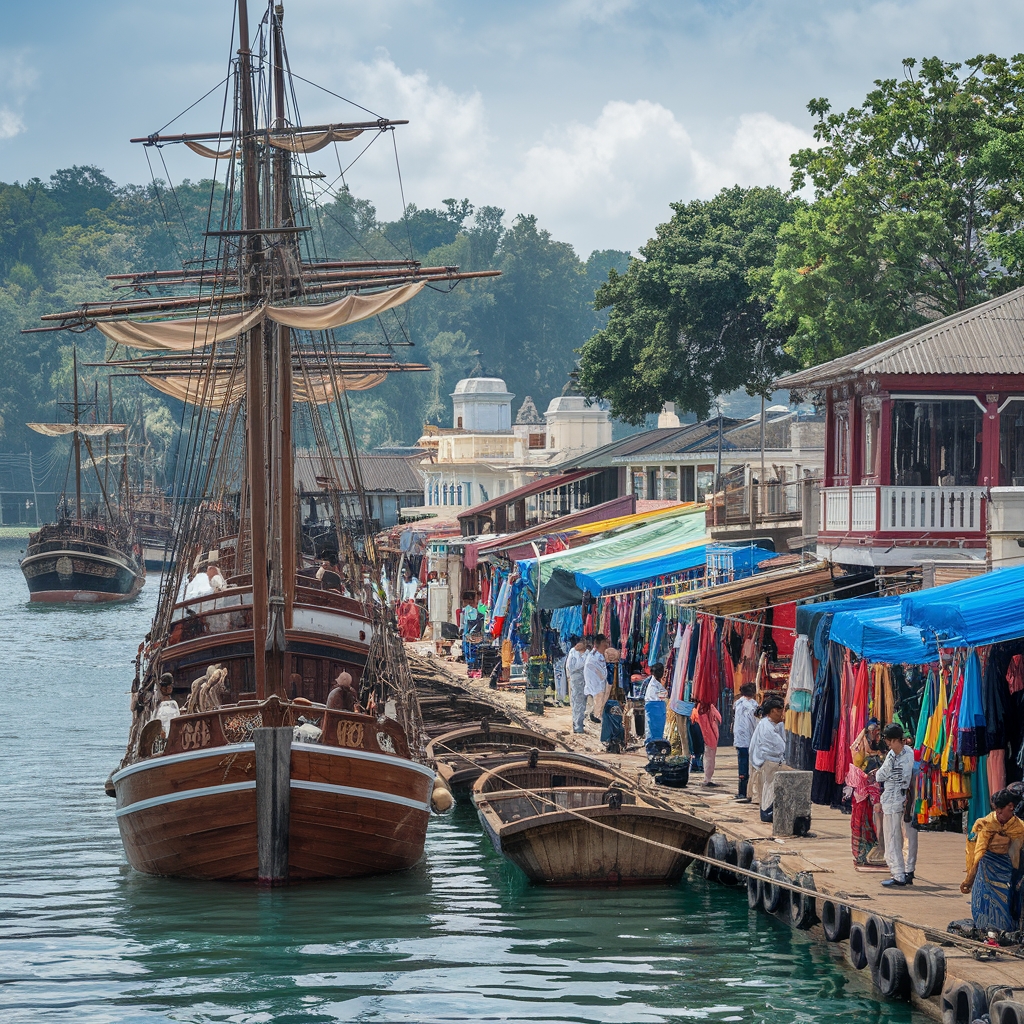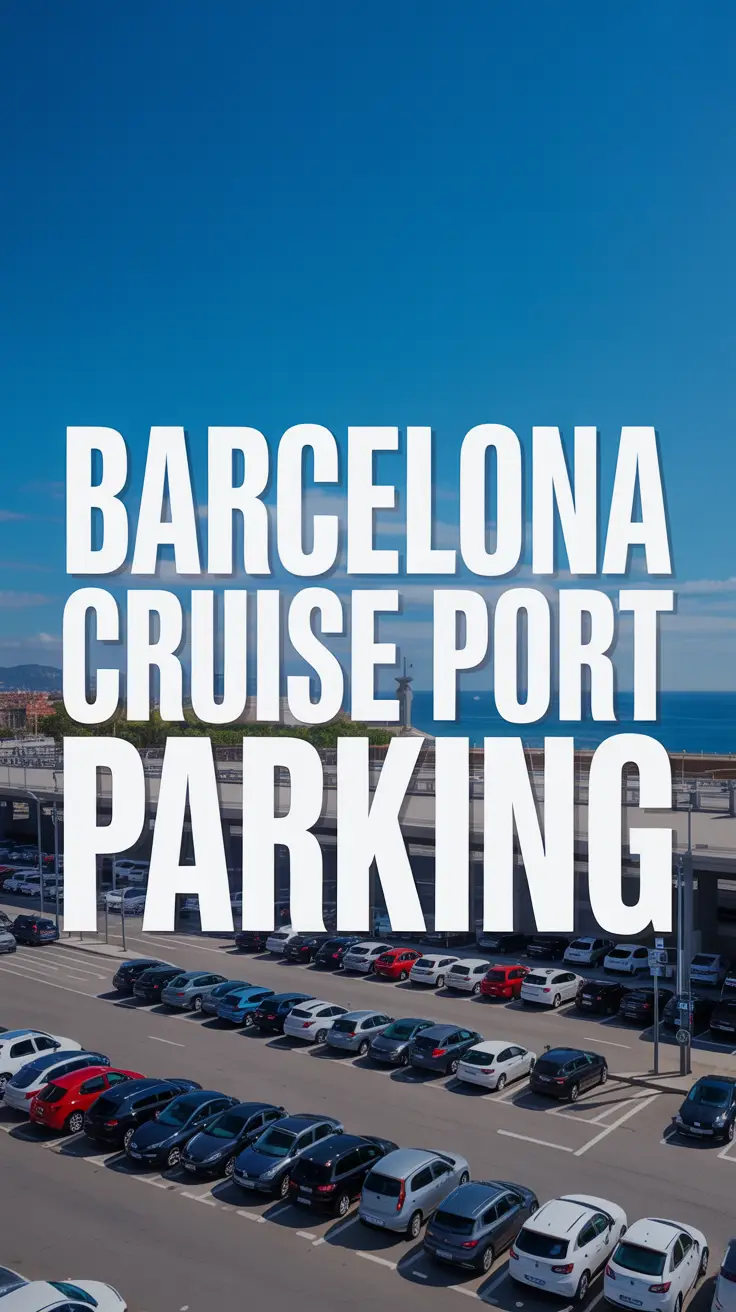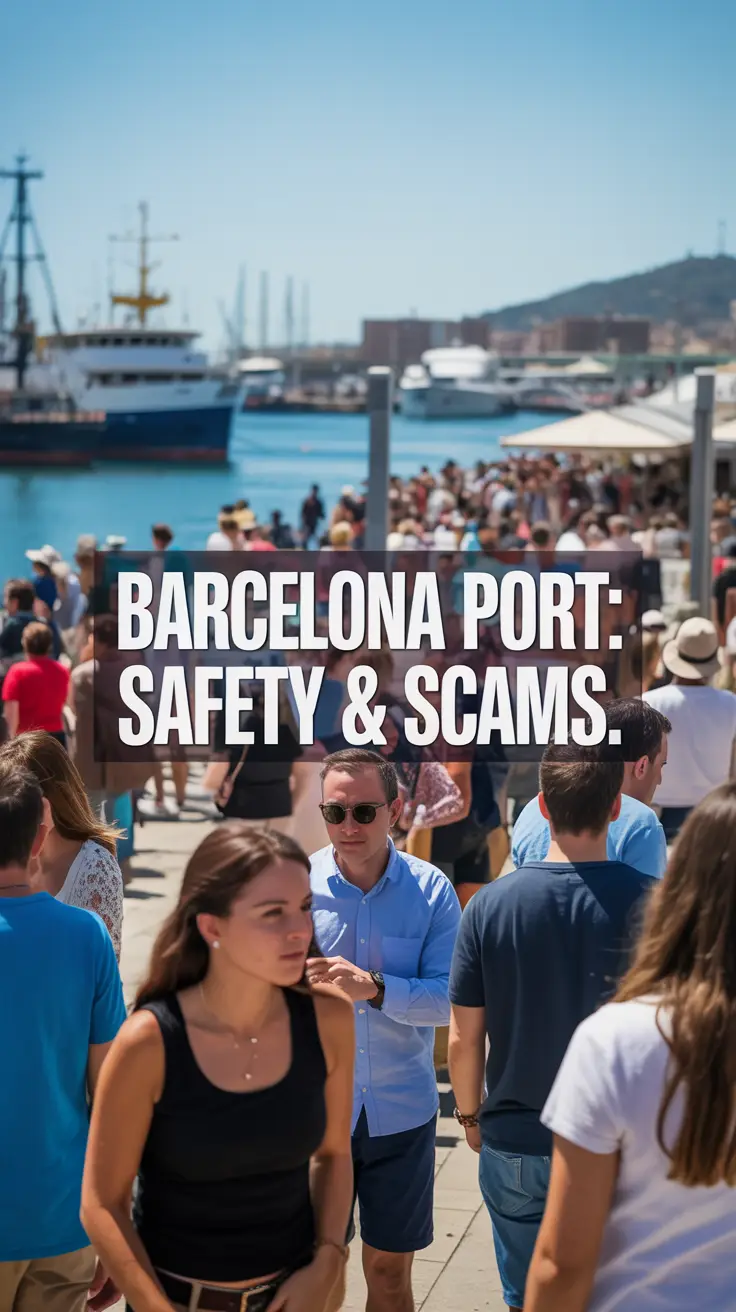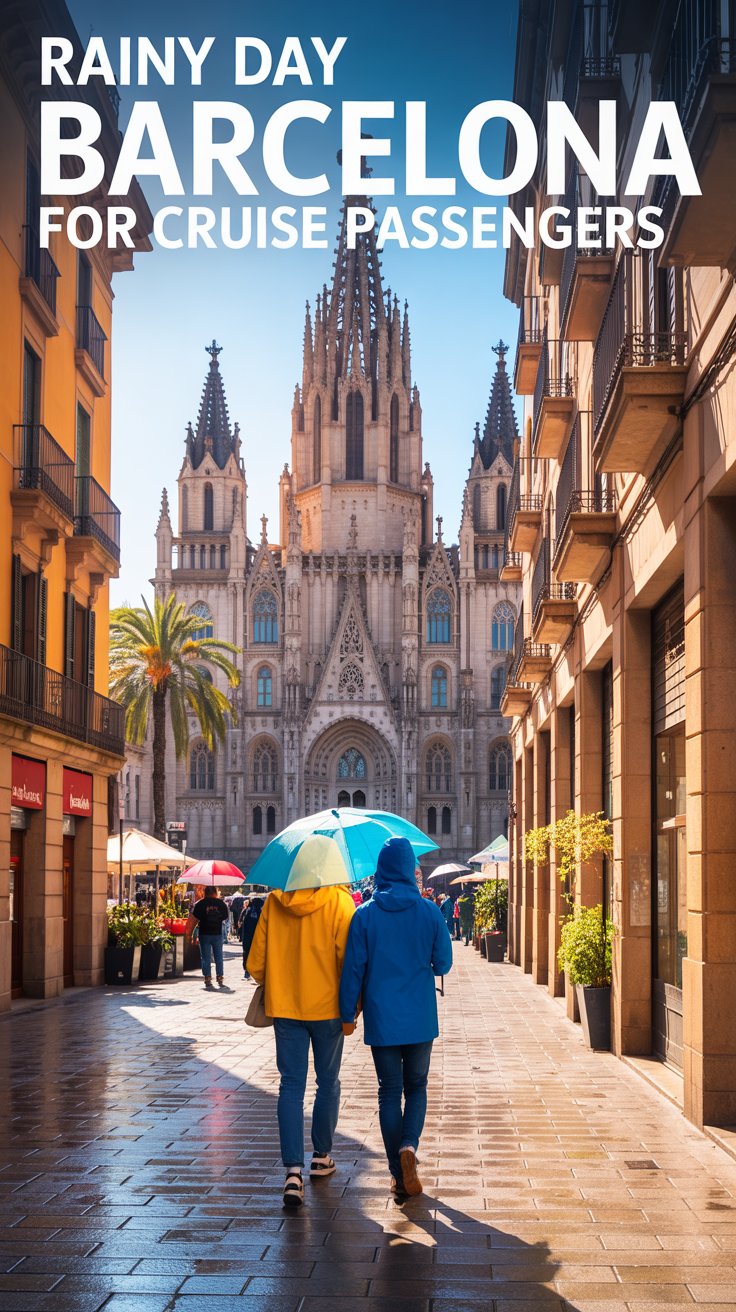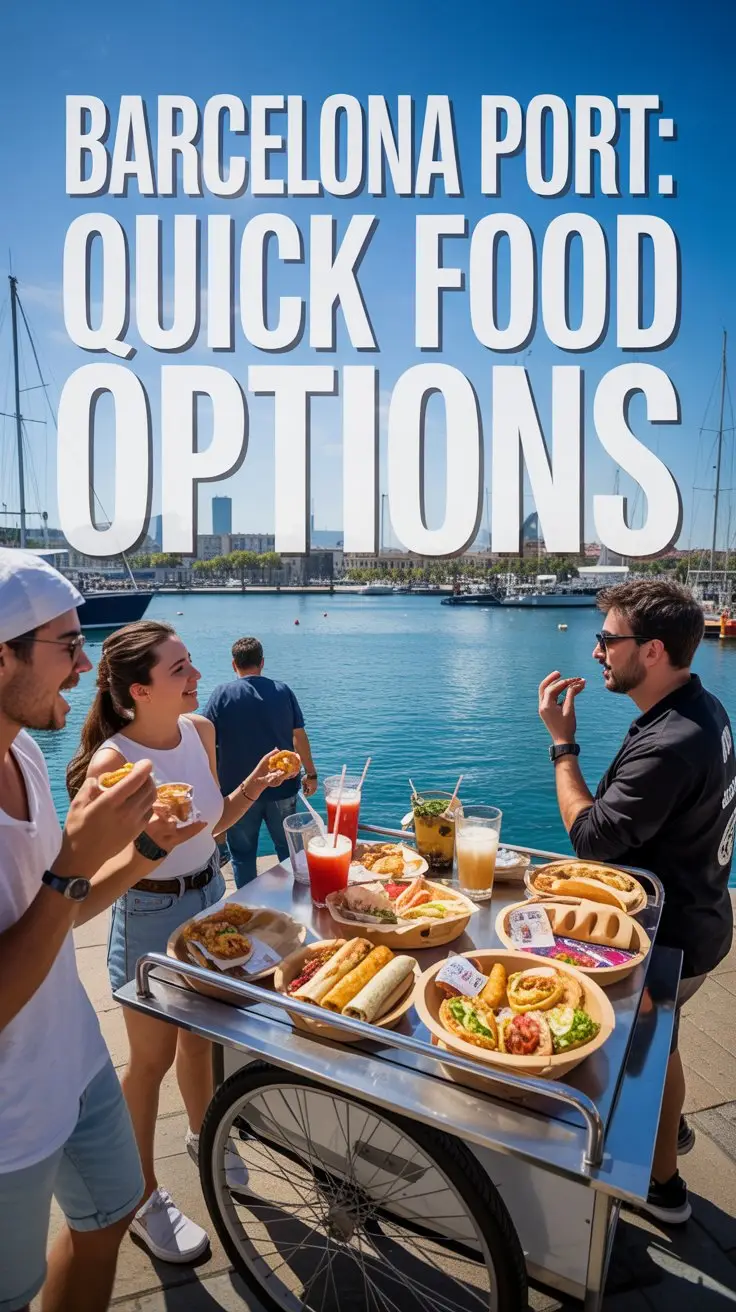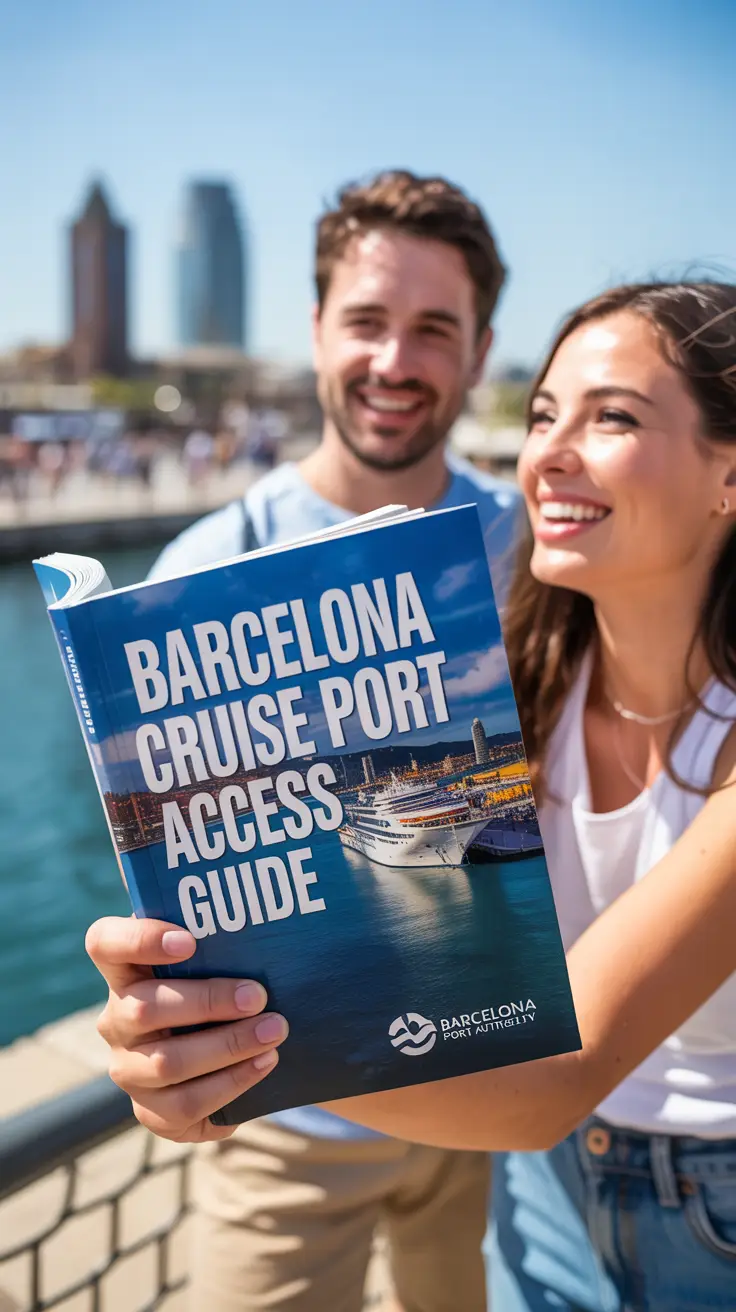Conakry’s cruise port is tucked away in the Kaloum district, where about 90% of Guinea’s trade happens.
The port sits roughly 10-15km from the international airport – grab a taxi and you’ll get there in 30-45 minutes.
Nothing fancy at the terminal, just the basics, with some secure parking spots nearby that’ll cost you between $5-$15 per day.
If you’re planning a visit, aim for October through April when the weather’s at its best.
While you’re in town, check out the National Museum, wander through the bustling Marché du Niger, or hop on a boat to Kassa Island for a day trip.
This guide covers everything you need to know for exploring Guinea.
Map of Conakry Guinea Cruise Ship Port
Where is The Port Located?
Conakry’s cruise port is located at 9°31′8″N 13°42′55″W in the Gulf of Guinea on Africa’s west Atlantic coast. You’ll dock in the Kaloum neighborhood of Guinea’s buzzing capital, right inside the Autonomous Port of Conakry complex.
This key harbor is basically Guinea’s front door to the world, handling a whopping 90% of what goes in and out of the country. When you step off your ship, you’ll find yourself pretty close to downtown, with fishing spots and cargo areas nearby. The port runs on GMT time and has decent water depths of 10-13 meters, so most cruise ships can pull in just fine at high tide.
How to get to the port, by air, train, road
Getting to the Port in Conakry, Guinea
Planning your trip to Guinea’s main port? You’ve got a few ways to get there. The Conakry cruise port is pretty accessible – about 10-15km from the international airport.
- Air: Grab a taxi from the airport – you’ll reach the port in about 30-45 minutes. If you’re lucky, your cruise line might offer shuttle service, so check when you book.
- Road: Local taxis are everywhere, or use a ride-sharing app to avoid haggling over prices. Hotels can also arrange private transfers if you want something more comfortable.
- Train: Don’t count on trains – Guinea’s railways mostly haul mining stuff, not people.
- Ferry: Coming from Sierra Leone? The Seacoach ferry runs between Freetown and Conakry three times a week, leaving at 3:30 in the afternoon.
Port Parking Options
Parking at Conakry’s Cruise Port
Heads up – parking at Conakry’s port is a bit of a mess. You’ll face three main headaches: barely any spaces, sketchy security, and dirt lots that turn to mud when it rains. Don’t expect a nice parking garage or any way to reserve spots ahead of time.
Your safest bet? Try one of the private lots near the port. They’ll run you between $5-$15 per day, depending on what you’re driving. Just remember to bring actual cash – dollars, euros, or local CFA francs will work, but leave your credit cards at home.
Got mobility issues? You’ll need to arrange your own help. The place has zero accessible spots, no ramps, and not a paved walkway in sight.
Driving something big? Better call the port folks ahead of time. They’ve got height limits, and larger vehicles get slapped with fees starting at $25 daily.
Local Transport & Transfers
Local Transport & Transfers
Getting around Conakry can be tricky without your own wheels, but don’t worry. The city doesn’t have great public transport, but you’ve got options to navigate the chaos:
- Shared taxis will save you cash at 5,000-10,000 GNF per seat – just be ready for the driver to stop constantly picking up other passengers
- Private taxis cost more (50,000-150,000 GNF) and you’ll need to haggle hard – expect to pay extra if you’re obviously a tourist or traveling at night
- Hotel transport services cost more but are worth it for peace of mind – fixed prices and drivers who won’t rip you off
- Maritime transfers on SNG boats between Conakry and Kamsar are a game-changer – why suffer a 6-hour road trip when you can cruise there in 2.5 hours?
Port Terminal Facilities and Accessibility
Conakry’s port isn’t state-of-the-art, but the cruise terminal has what you need when your ship pulls in. The 600m berth can handle medium-sized ships, and the 22-hectare terminal gives enough room to process everyone coming ashore.
Your ship will need pilots to guide you in – that’s mandatory 24/7. Once on land, you’ll find the basics: customs areas and places to handle luggage. They offer some repair services and fuel if you’re in a pinch, but nothing fancy.
The port never closes, though certain services only run during specific hours. Security keeps an eye on things throughout your stay, and there are navigation aids to help your ship come and go safely.
Things to Do Before Your Cruise in a Day
Things to Do Before Your Cruise in a Day
Only got 24 hours in Conakry before you sail away? No sweat! Guinea’s bustling capital packs plenty of punch for a quick visit. Here’s how to cram the best bits into your day without missing the good stuff.
- Kick things off at the National Museum – it’s a bit dusty but crammed with cool artifacts that tell Guinea’s story better than any guidebook
- Hit up Marché du Niger where you can haggle for colorful fabrics and quirky souvenirs that’ll make your friends jealous
- Pop into Cathedrale Sainte-Marie – even if churches aren’t your thing, this neo-Gothic beauty is worth a quick peek
- Escape the city chaos with a boat ride to Kassa Island – the lobster is insanely fresh and you can wiggle your toes in the sand before ship life begins
Walks near the port
Stretching your legs after being cooped up on a cruise ship isn’t just refreshing—it’s a must! Conakry has tons of walking options for travelers like yourself.
Take a wander through Jardin Botanique‘s tropical wonderland or hit up Jardins Du 2 Octobre‘s shady walkways, both just a half-hour stroll from the port. Want some culture? Map your own urban adventure connecting St. Mary’s Cathedral, the bustling Niger Market, and the National Museum.
If you’re into beaches, head to Plage De Tayaki for some killer sunset views, or if you’re feeling adventurous, grab a boat out to the Iles de Los archipelago. Need something more organized? Give Guinea Treks a shout—they do guided nature walks through local villages that are pretty cool.
Dining and Shopping
Dining and Shopping
Worked up an appetite after all that walking around Conakry? Good news – the food scene near the port is pretty awesome. You’ll find everything from fancy international dishes to local bites that won’t break the bank.
Check out these port-area food and shopping spots:
- Head to L’Océan in Ratoma where locals hang out by the pool munching on super fresh seafood
- Wander through Marché du Port to snag some colorful African fabrics and cool handmade jewelry
- Don’t skip the street food vendors near the port – their maafe and yassa are the real deal
- Got a sweet tooth? Le Damier has killer French pastries, or grab a quick coffee at Café de la Gare if you need a pick-me-up
Accommodation near the port
Tired after shopping and dining? You’ll need a comfy place to crash during your Conakry trip, and luckily there are some great spots near the cruise terminal.
If you’re splashing out, check out the Noom Hotel right on the ocean – they’ve got amazing Afro-fusion food and a cool pool bar by the sea. Riviera Royal Hotel is another fancy option with killer Atlantic views.
On a tighter budget? Hotel Petit Bateau runs about $128-134 a night and you can walk straight onto the beach.
Pro tip: At Noom, grab a room on the upper floors to avoid the street noise. At Petit Bateau, ask for a room above the breakfast area for the best pool views. Most places have WiFi and you’ll be just a stone’s throw from all the port action.
Customs & Immigration at The Port
Arriving at Conakry’s Port: What to Expect
When your vessel docks in Conakry, you’ll need to follow four main steps. First, hoist that Q-flag while the health folks do their thing. Immigration officers will hop aboard to check passports – make sure yours won’t expire within six months!
- Upload all your paperwork (crew lists, health docs, cargo manifests) to the Guichet Unique system
- Wait for customs to figure out what your stuff is worth
- Pay any duties through wire transfer (only use authorized banks)
- Stay on your boat until you get the green light – usually takes between 30 minutes to an hour after they process everything
Brush up on your French before arriving – it’s what everyone speaks around here.
Local Currency & Payment Options
Local Currency & What to Do About Money
You’ll need to sort out money once you’ve made it through immigration. Guinea uses the Guinean franc (GNF), with bills from 100 to 20,000 GNF. Right now, you get around 8,655 GNF for 1 USD.
Cash is king here. Credit cards? Forget about it, except at fancy hotels in Conakry. Skip the airport money changers and head to actual banks in the city for better exchange rates. Trust me, you’ll want to keep a bunch of small bills handy for market vendors and taxi drivers.
Don’t flash your cash around, and take a quick look at any banknotes you receive – counterfeits happen. ATMs are few and far between, so bring enough cash to cover your needs. Oh, and hang onto those exchange receipts if you want to swap your leftover francs before flying out.
Emergency Contacts
Emergency Contacts
Let’s face it – nobody plans for emergencies in Conakry, but you’ll want these numbers just in case. If you’re dealing with a maritime emergency, reach the Maritime Rescue Coordination Centre (MRCC) at +224 6041 2728, or try their backup line at +224 6041 2737.
Need help while docked? Here’s who to call:
- MRCC Emergency – Direct line for medevacs and serious stuff
- Ship’s Port Agent – Djibril Keita from AGL Group can help at +224 622 354 150
- Wilhelmsen Services – Round-the-clock support at +33 442 354555 for logistics headaches
- VHF Radio – Just grab your ship’s radio to reach port authorities (your cruise line knows which channels work)
History of The Port
Now that you’re ready for any emergencies, let’s dig into the cool history of where your ship pulls in. This port wasn’t always the busy spot you see today – it started as just a natural harbor tucked behind some islands and sandbars. The French settlers saw potential here and built the first breakwater on a sandbar they called “la Prudente.”
Back in the day, this was unfortunately a slave trade port, which later shifted to gold exports during colonial times. By the 1930s, bananas became the big business, with ships loaded full heading out to global markets. When Guinea broke free from colonial rule in 1958, they kicked off major expansions to modernize the whole operation.
These days, after some corporate drama between Getma and Bolloré Group fighting over who would run things, the port handles around 270,000 shipping containers every year. They’re making progress too – they recently welcomed their first ship powered by liquefied natural gas, which is a pretty big deal.
Best Times of Year to Cruise from The Port
When’s the best time to cruise to Conakry? You’ll want to aim for October through April during dry season. Trust me, you’ll thank yourself for avoiding the rainy months – you’ll get way less rain, not-so-muggy air, and smoother sailing.
Want the inside scoop on timing? Check these out:
- November-April is golden – clear skies and barely any rain (like 5 days max per month)
- October and May are sneaky-good times – fewer tourists and sometimes better deals
- March-April gives you the clearest views (no Harmattan dust getting in the way)
- If you’re eyeing November-April, grab tickets early – everyone wants those prime-time spots
Whatever you do, steer clear of June through September. Those heavy rains can mess up port stops and ruin your shore plans. Not worth it!
Port Tips
Port Tips
Getting your cruise timing right is just the beginning – you’ve gotta nail Conakry’s port situation if you want a smooth experience.
The good news? When you dock, you’ll be super close to everything Kaloum has to offer. The bad news? Taxis aren’t exactly lining up at the terminal, so figure out your transport ahead of time. The ferry terminal’s pretty modern but don’t count on grabbing food there – bring your own snacks and water or you’ll be kicking yourself later.
Heading to Freetown? Boats leave at 3:30 PM on Wednesdays, Fridays, and Sundays. Sort out your immigration stuff before you board and make sure your passport isn’t about to expire (you need at least six months left on it).
One last thing – download some offline maps. Cell service is spotty as hell around here.
Frequently Asked Questions
Is It Safe for Tourists to Visit Conakry?
Conakry isn’t exactly a tourist paradise, if we’re being honest. You’ll need to watch your wallet constantly, and don’t even think about drinking the tap water unless you want an exciting hospital stay. Crime targeting foreigners is pretty common, medical facilities are basic at best, and the political situation can flip from calm to chaos without warning. Plus, there’s always that lingering terrorism concern. If you’re dead-set on visiting, just keep your wits about you and maybe don’t flash that expensive camera around.
What Vaccinations Are Required Before Visiting Guinea?
Planning a trip to Guinea? You’ll need a Yellow Fever jab (it’s required if you’re 9 months or older). Most travelers should also get Typhoid, Hep A, Polio, and Rabies shots. And don’t skip your malaria meds – you’ll need them no matter where in Guinea you’re heading.
Are Cruise Ships Often Delayed at Conakry Port?
Yes, cruise ships do tend to get held up at Conakry port. While we don’t have tons of specific cruise statistics, the reality is that port congestion, outdated infrastructure, extra health screenings, and the occasional political tension all create a perfect storm for delays. Best to build some buffer time into your plans if you’re cruising through there.
What Unique Souvenirs Can I Find in Conakry?
Looking for cool keepsakes in Conakry? The local markets are packed with real treasures! Grab yourself an intricate African mask, a booming djembe drum, or one of those gorgeous hand-dyed bazin riche gowns. The silver filigree jewelry is stunning too, and don’t miss the mudcloth textiles. These aren’t your typical tourist trinkets – they’re authentic pieces of Guinea that’ll remind you of your trip for years to come.
How Reliable Is Internet Connectivity in Conakry?
Internet in Conakry is pretty hit-or-miss. You can get decent connections at fancy hotels and around the port, but don’t expect anything lightning-fast. The service drops out randomly too. Grab a local SIM card as backup – you’ll thank yourself later when the main connection goes down.

